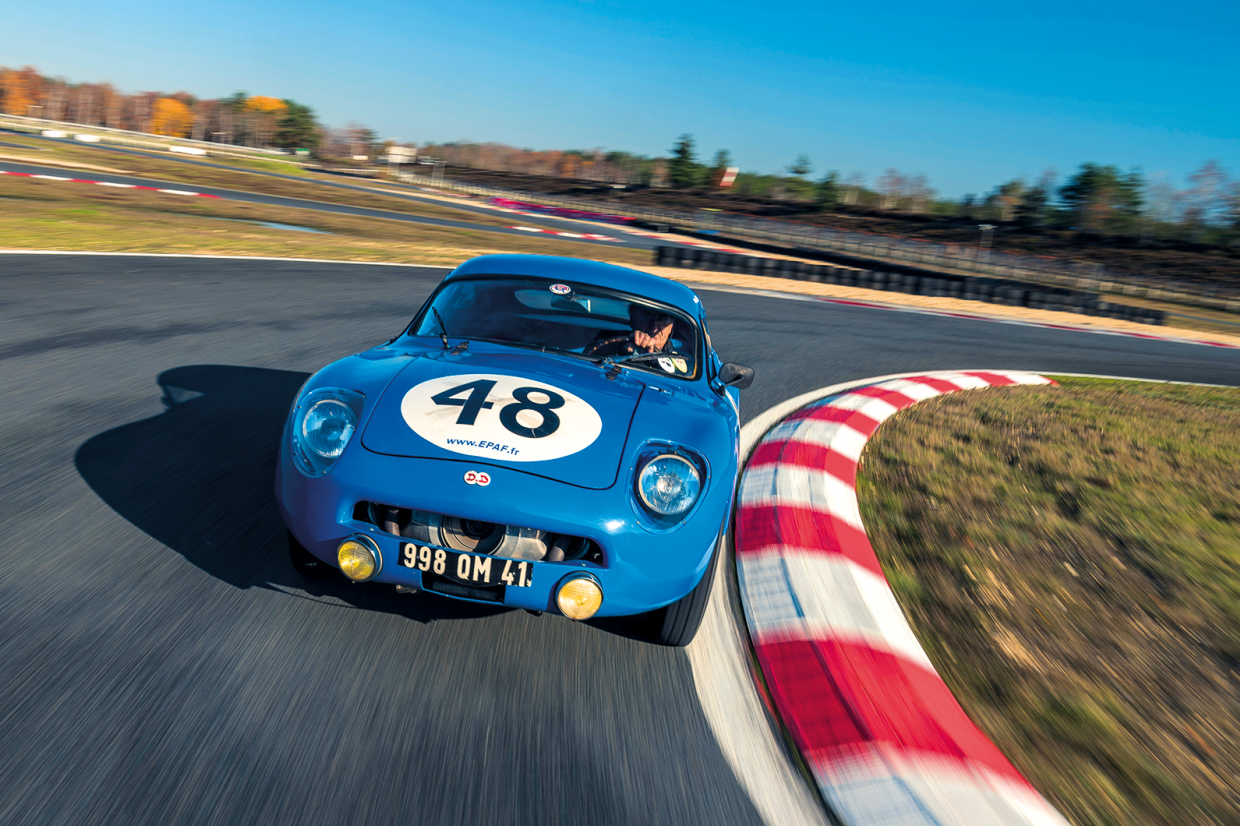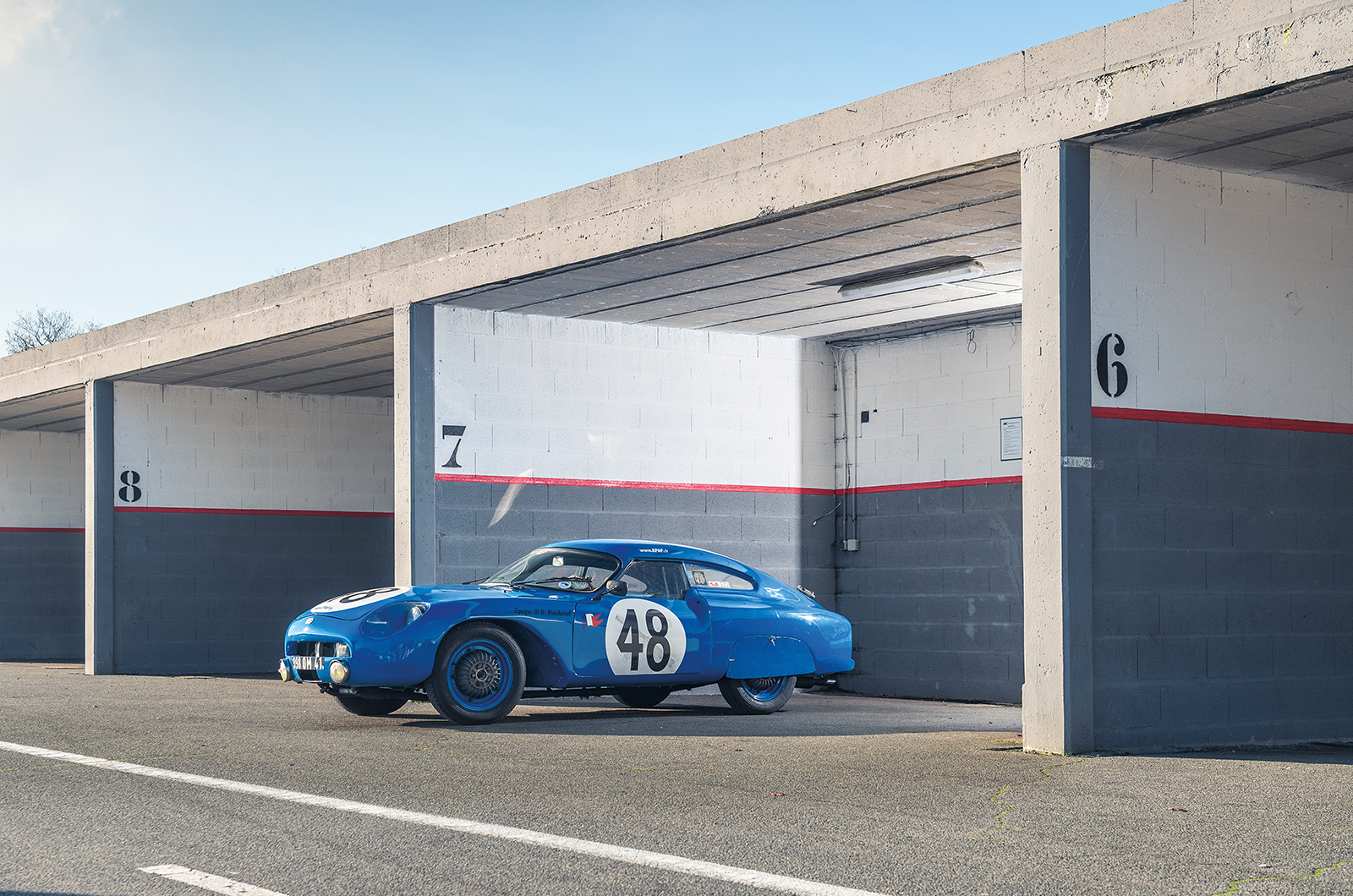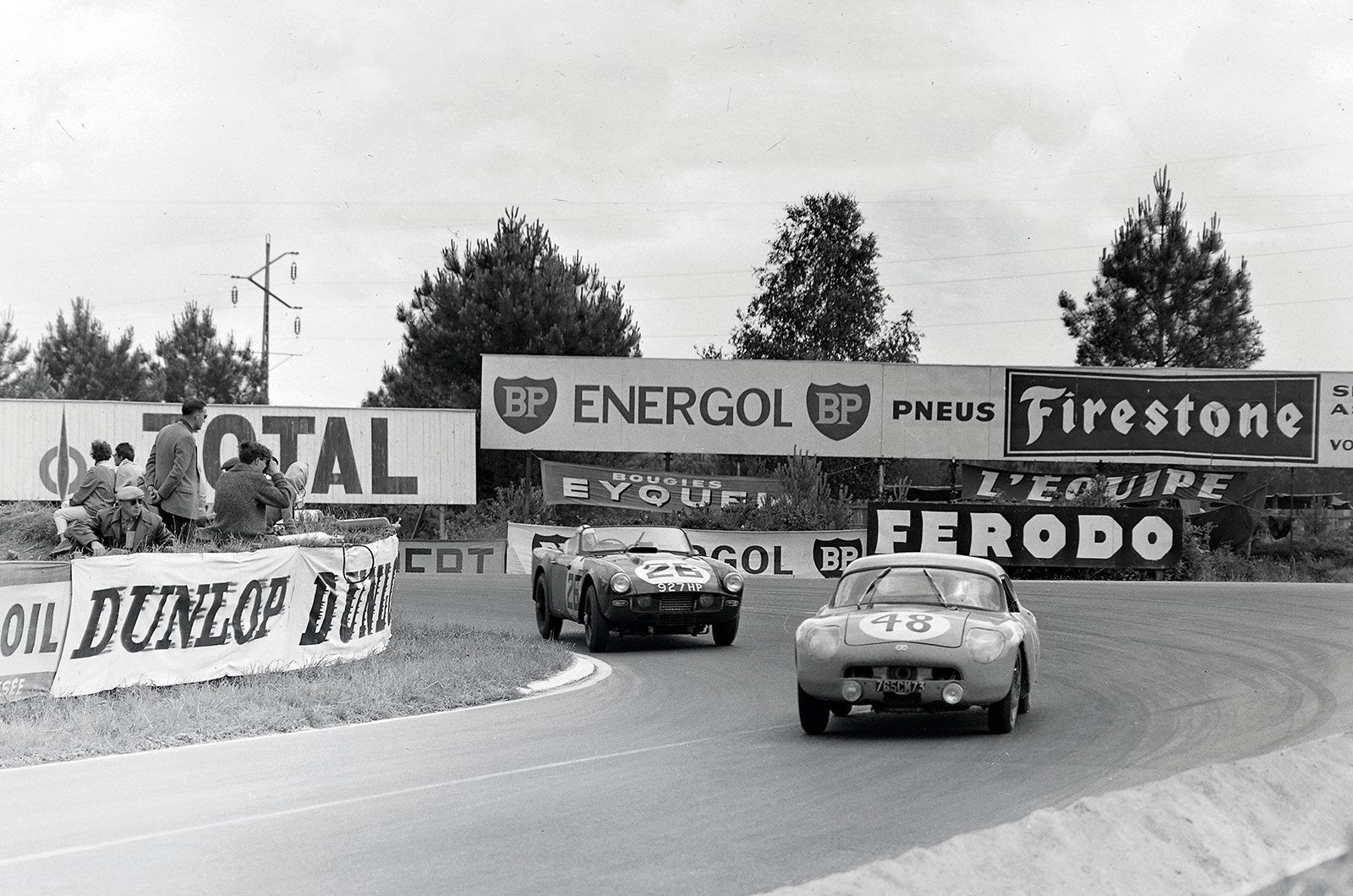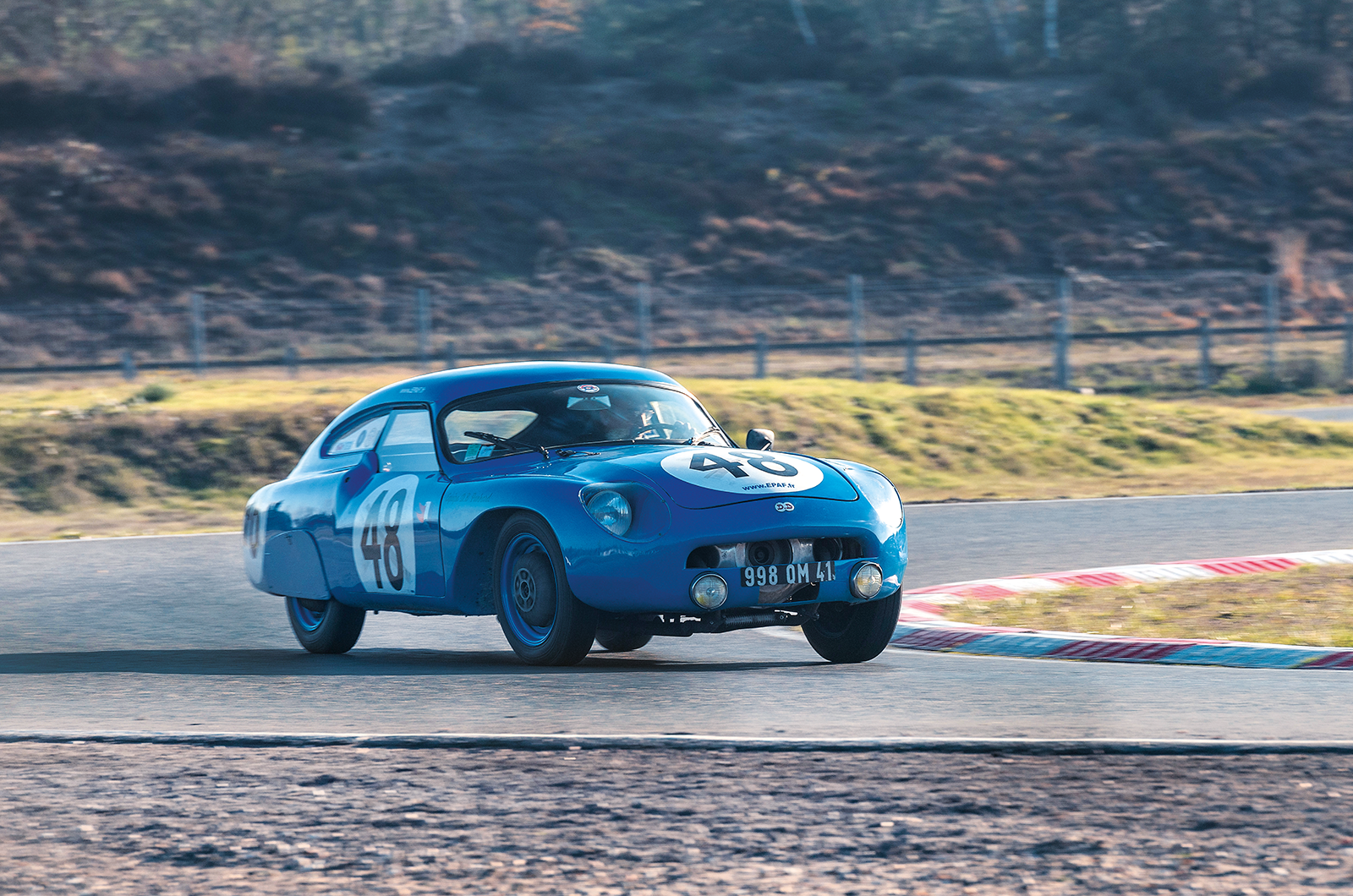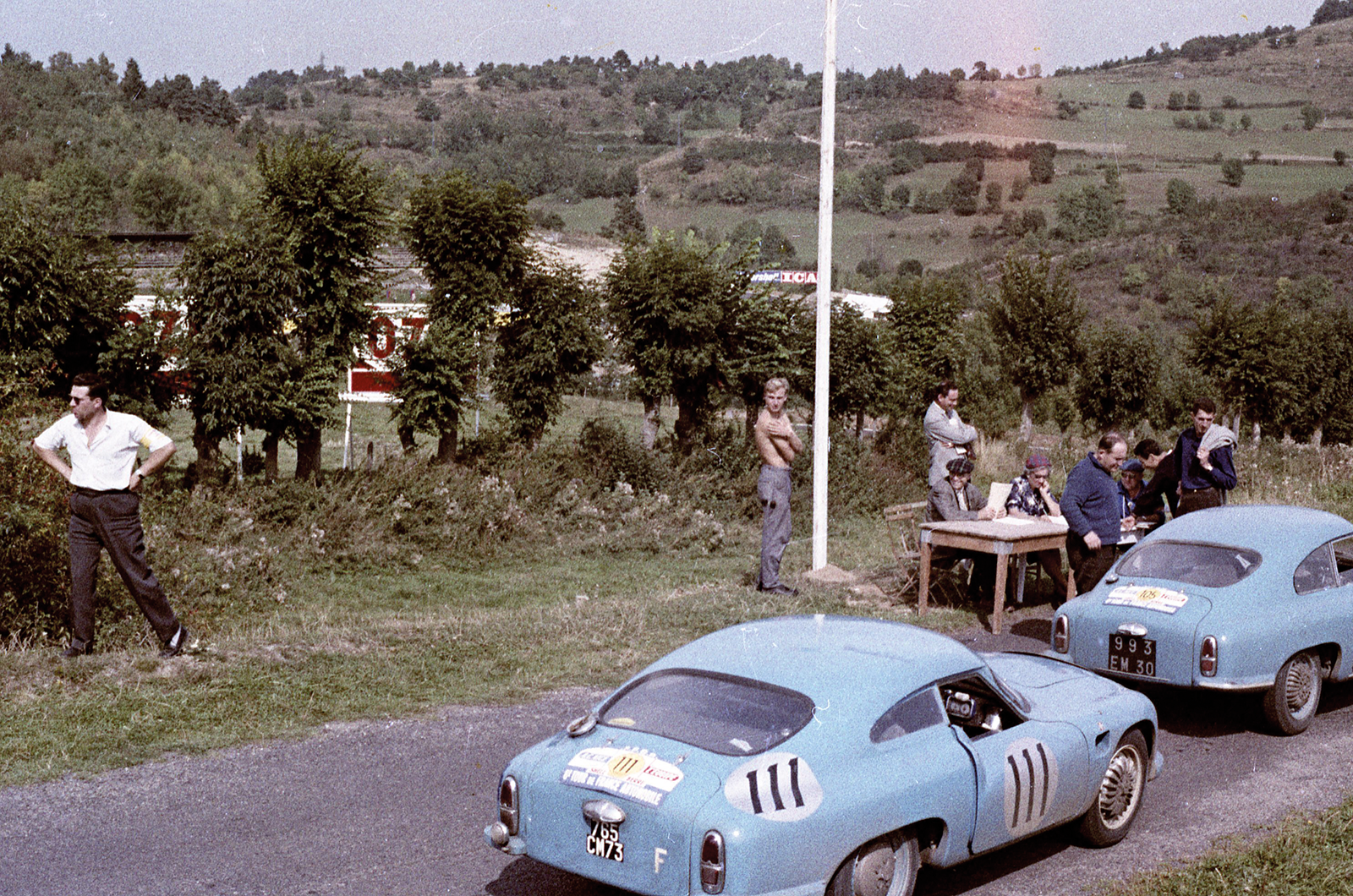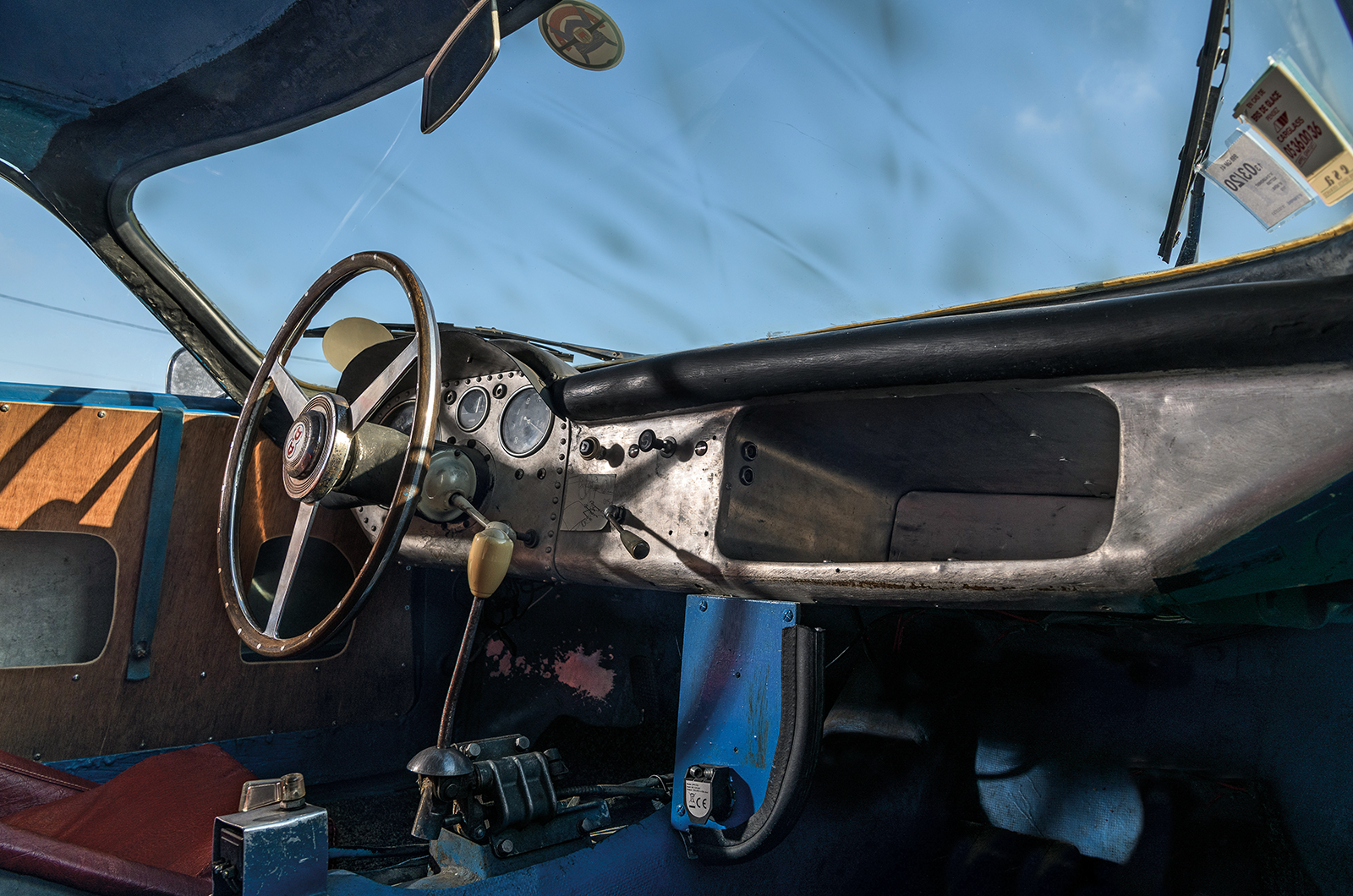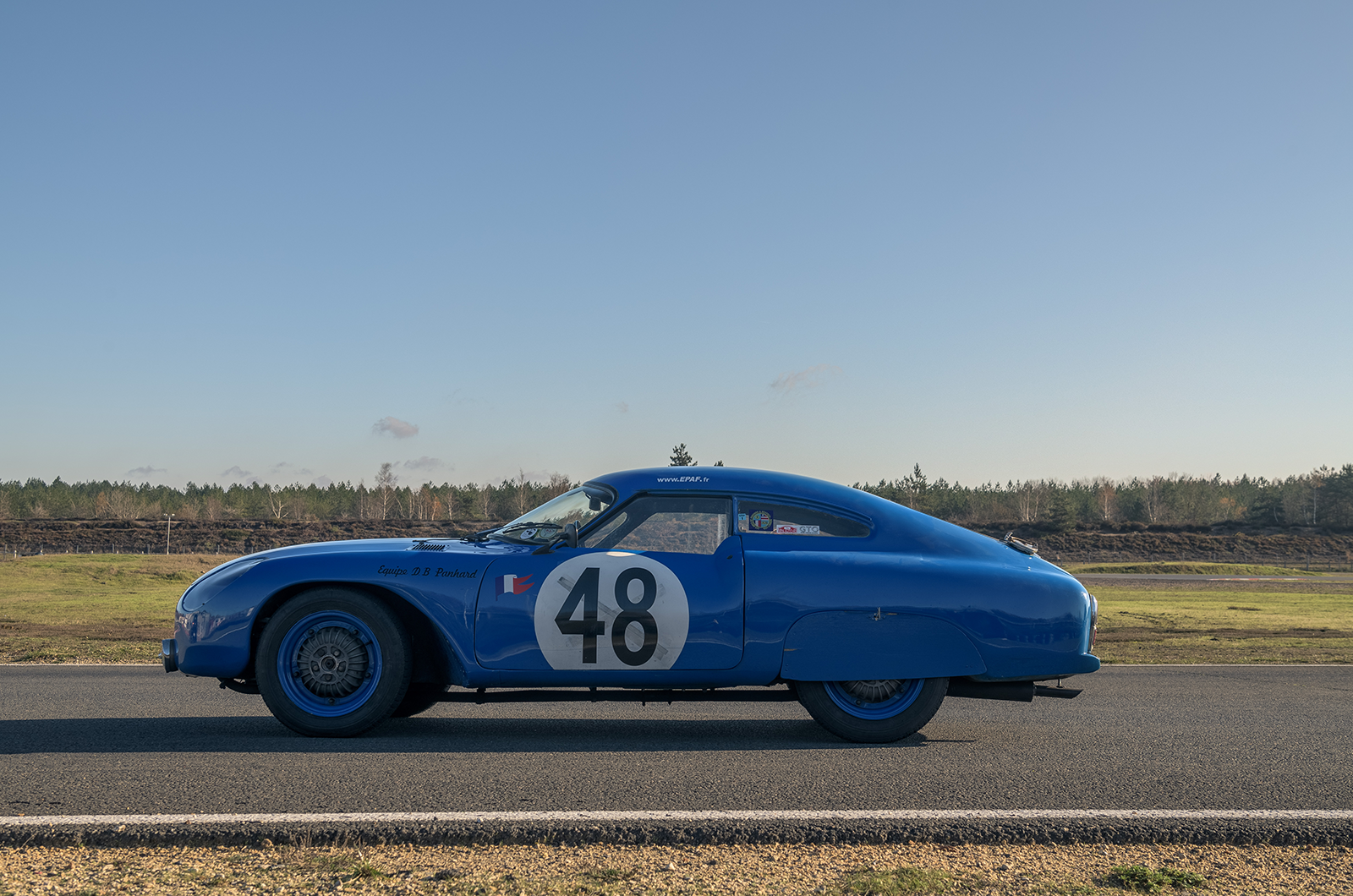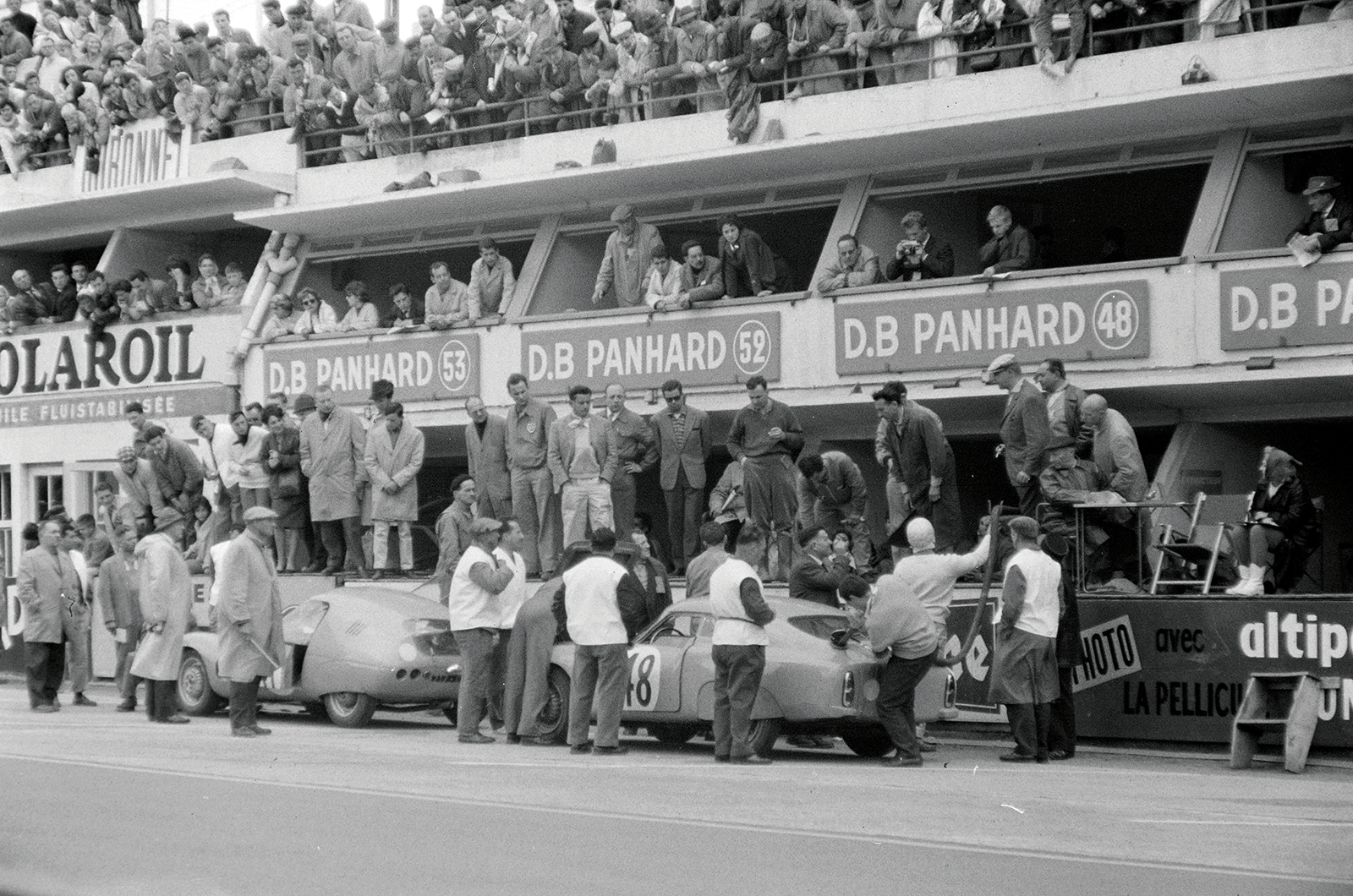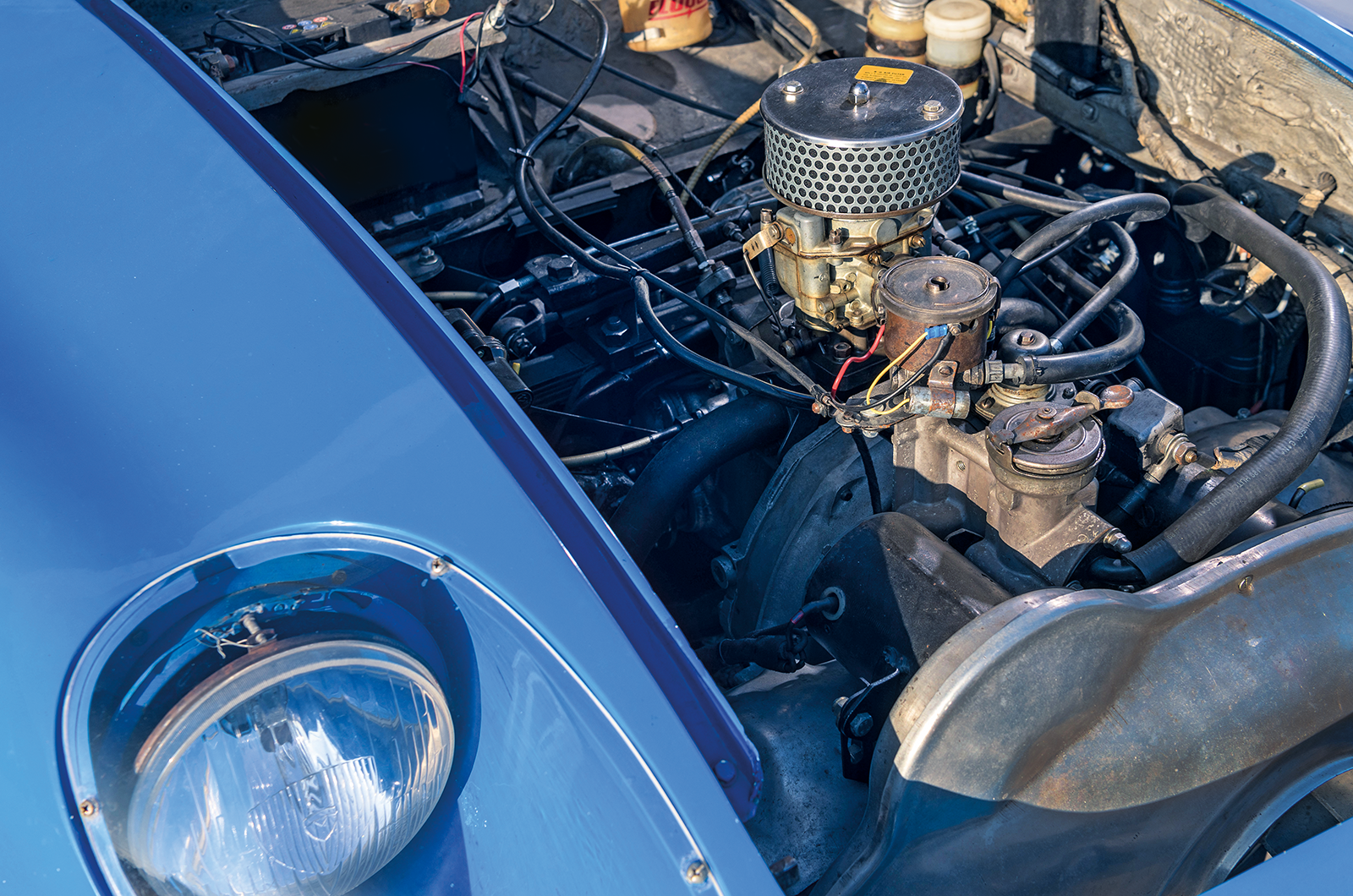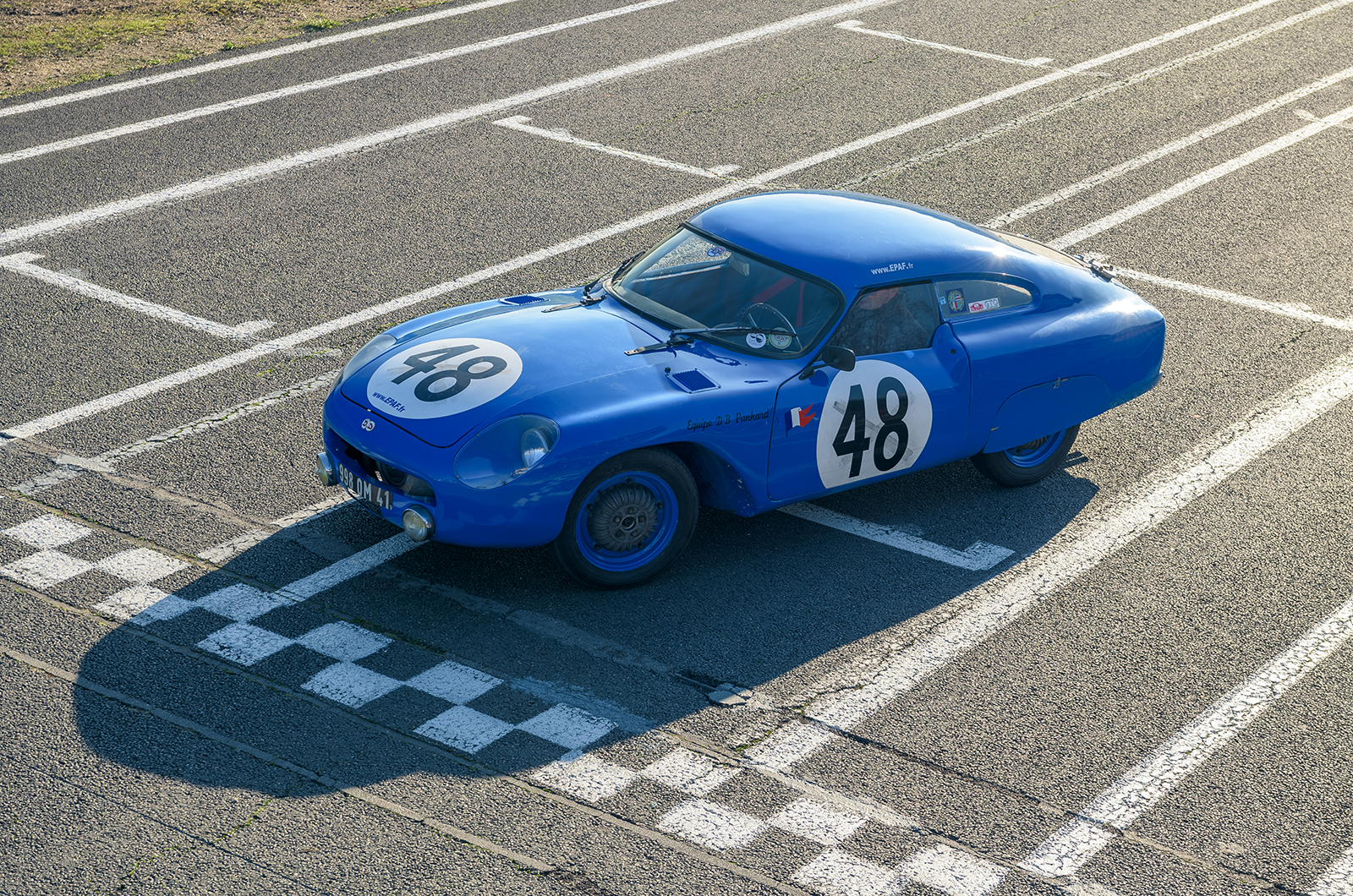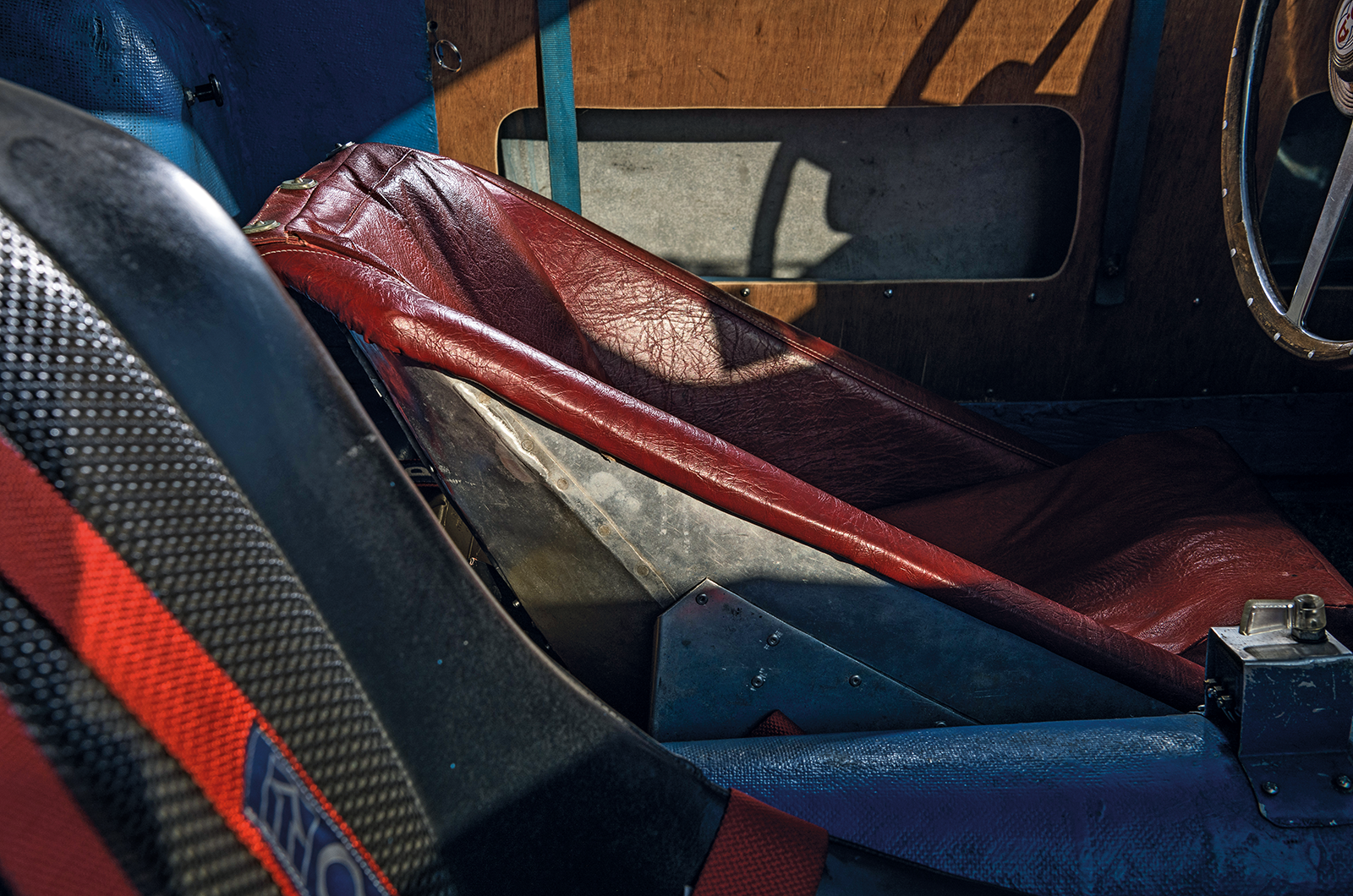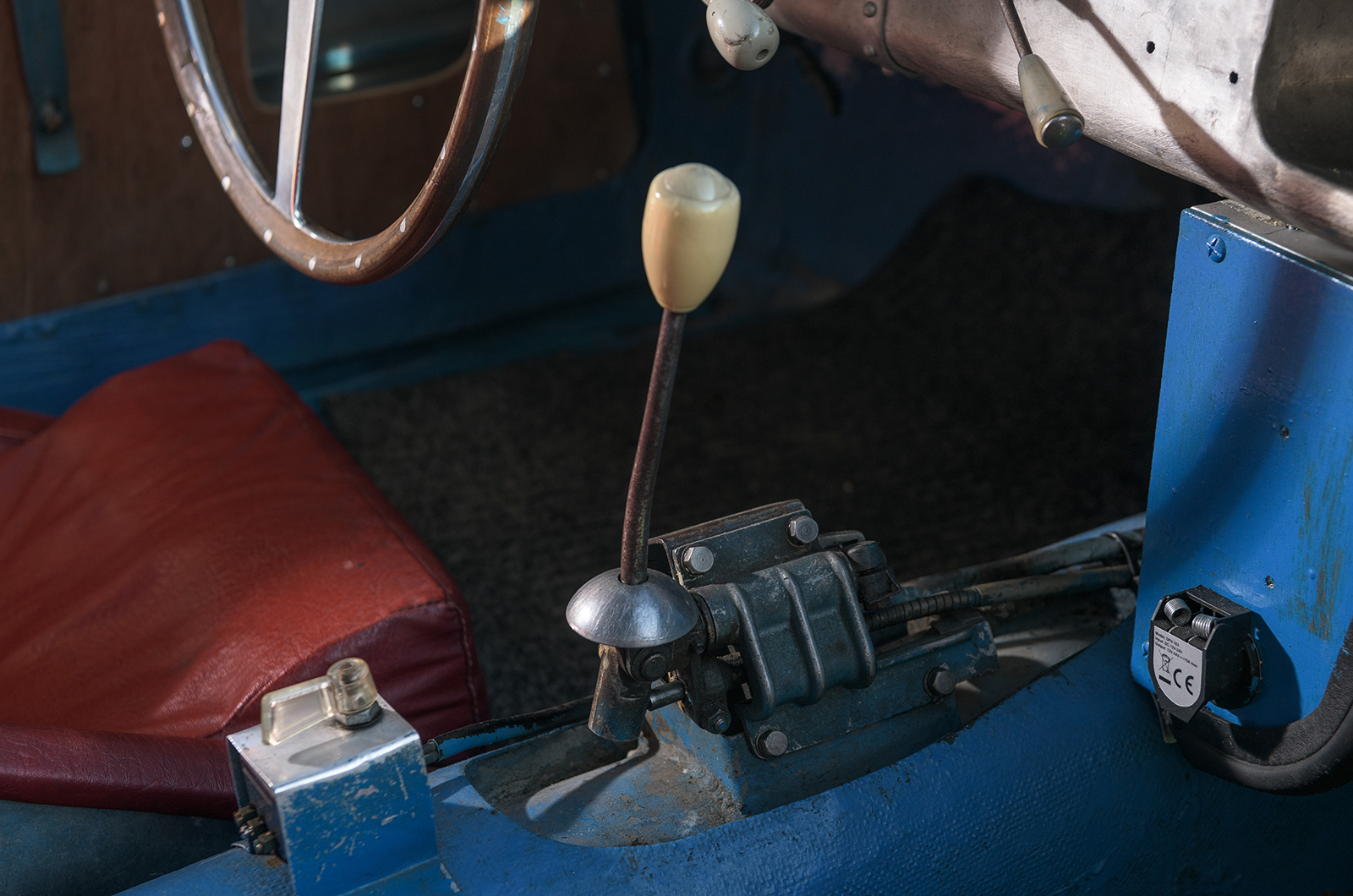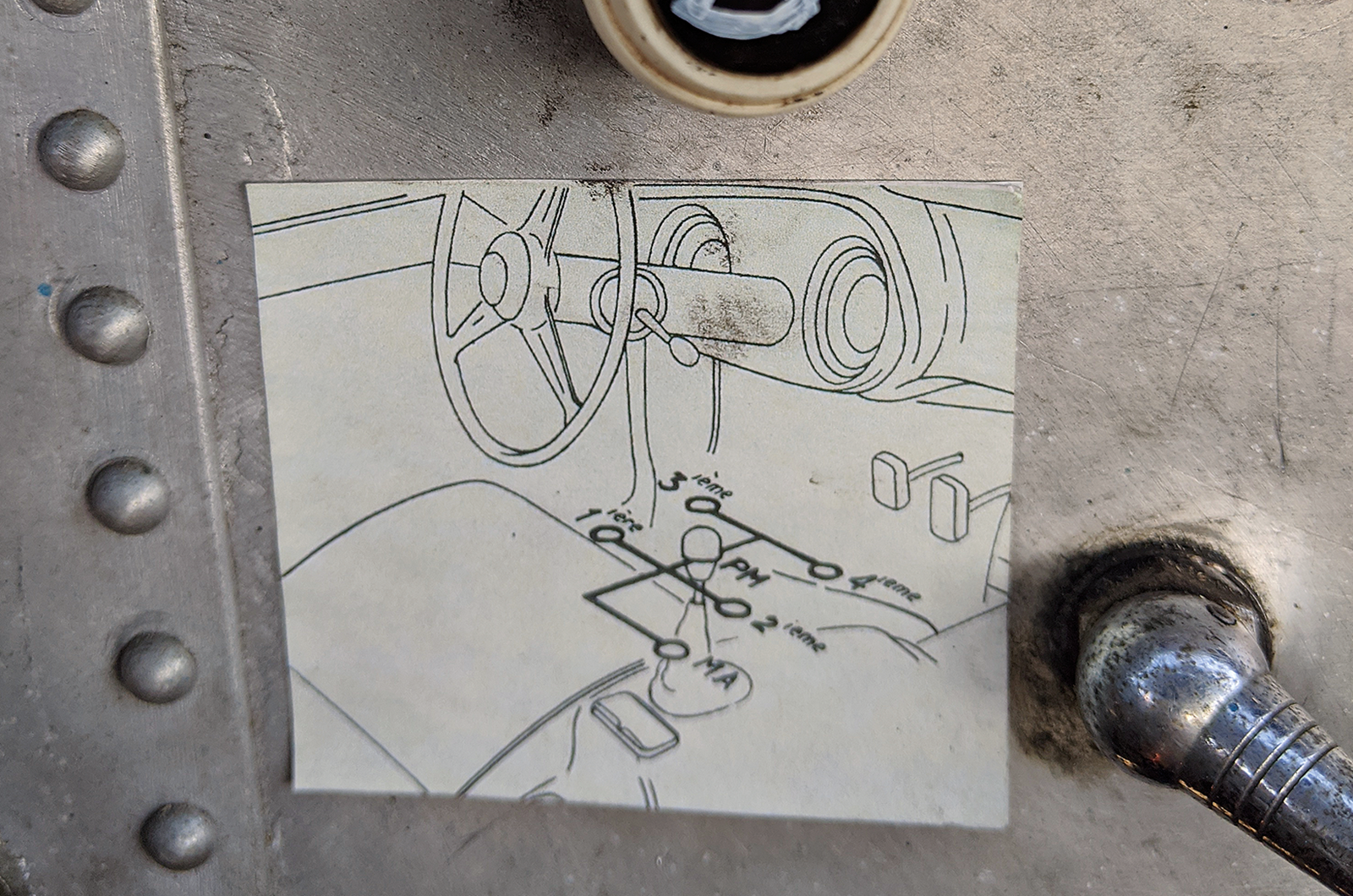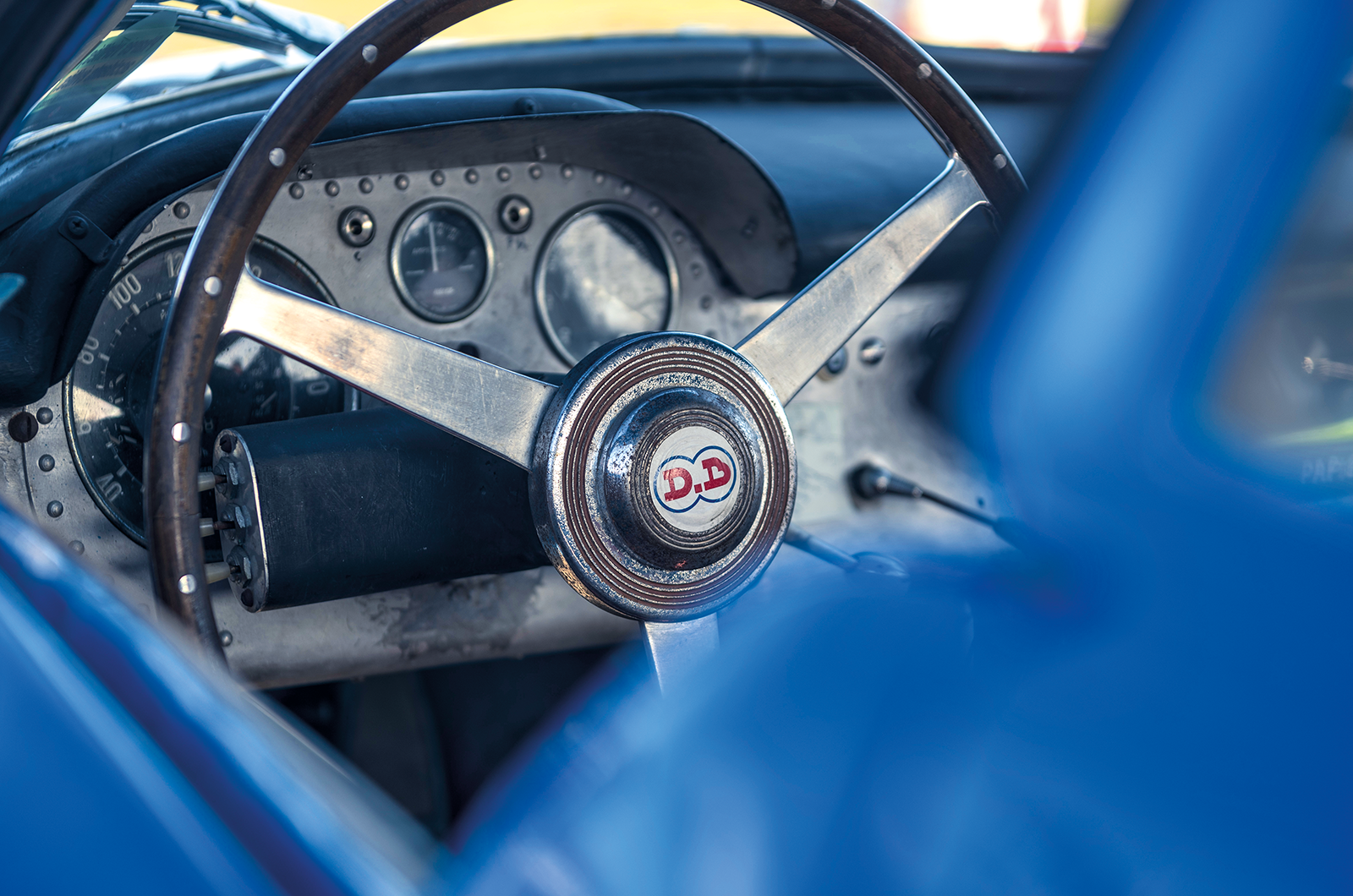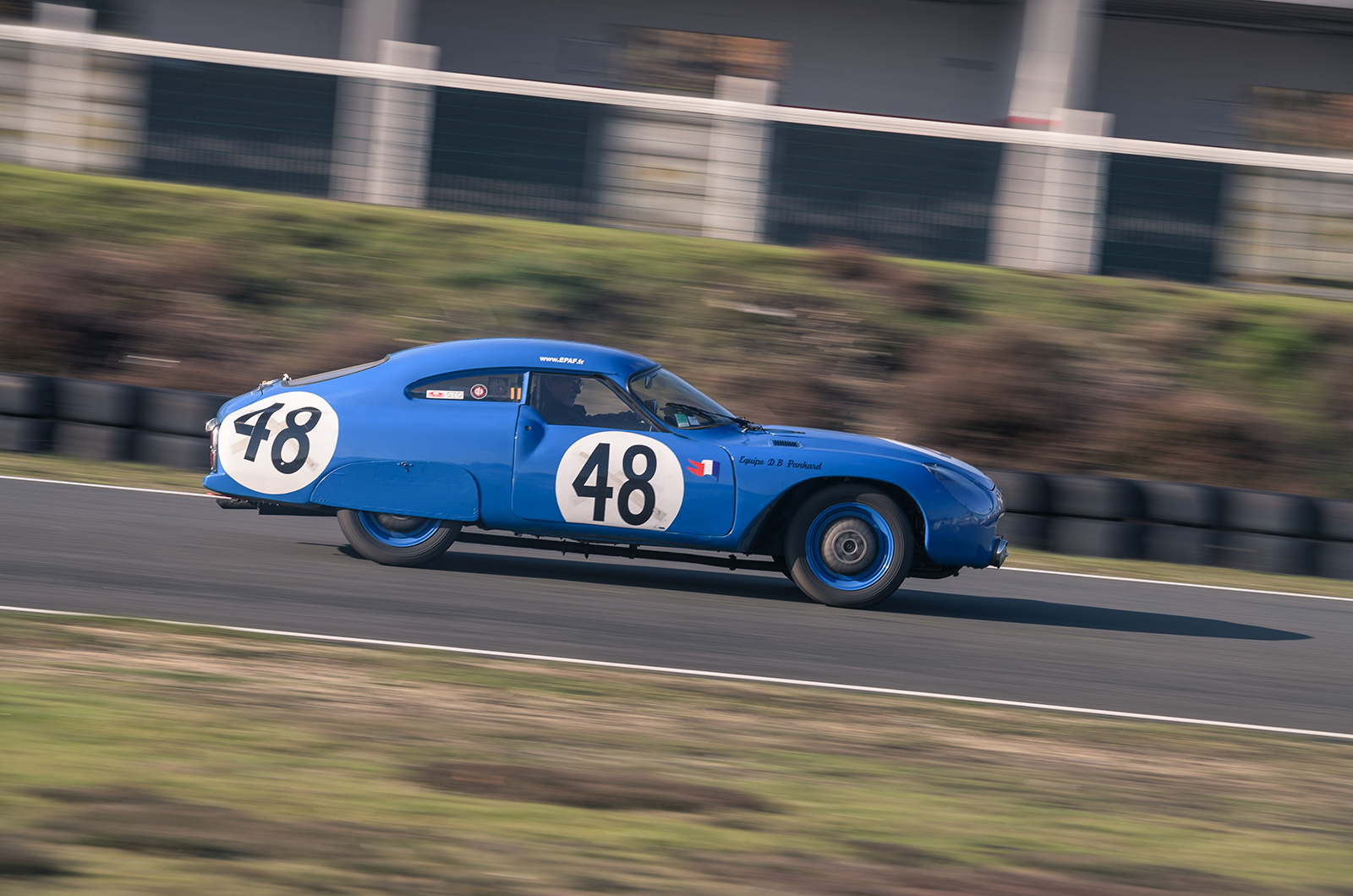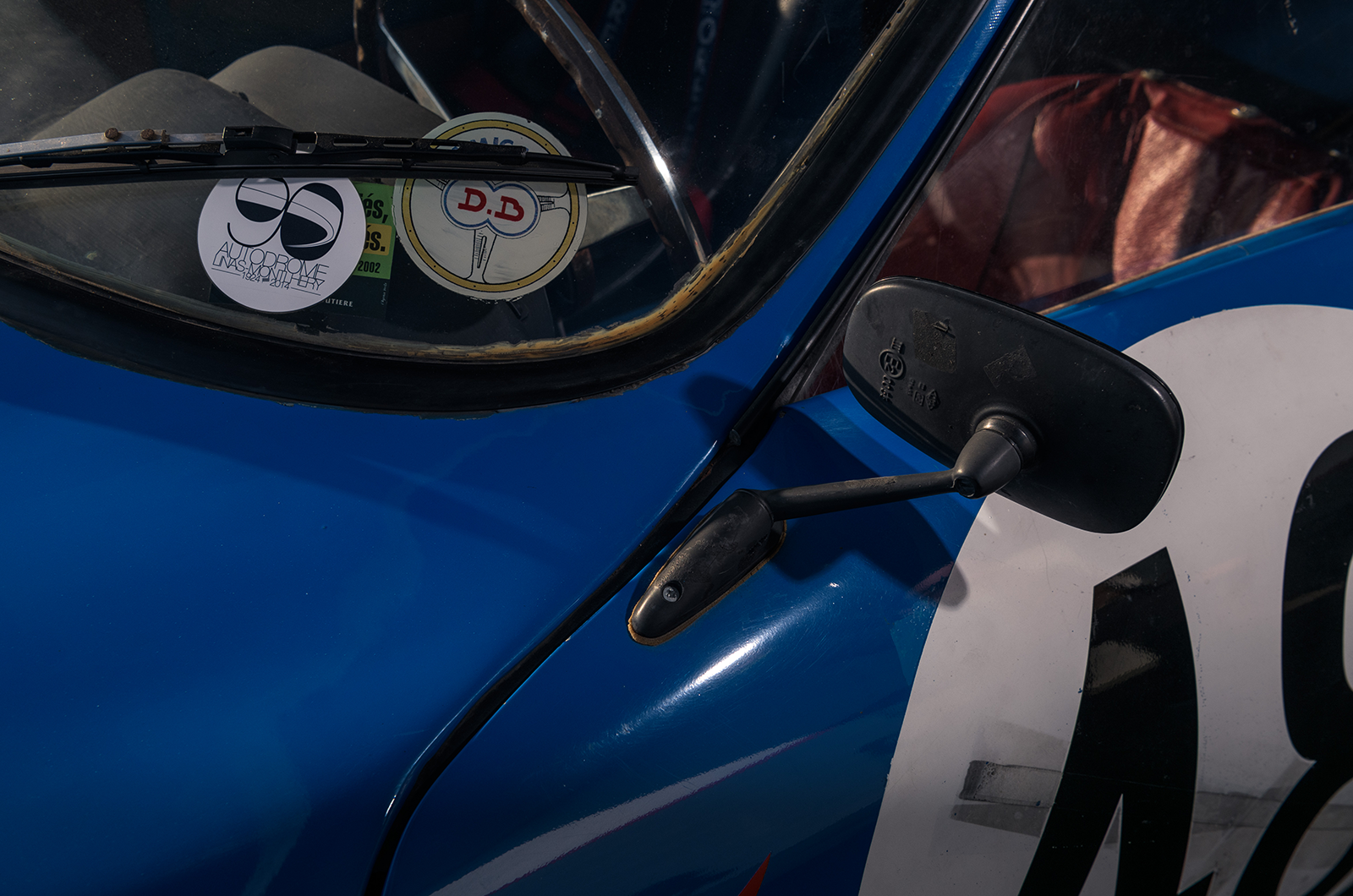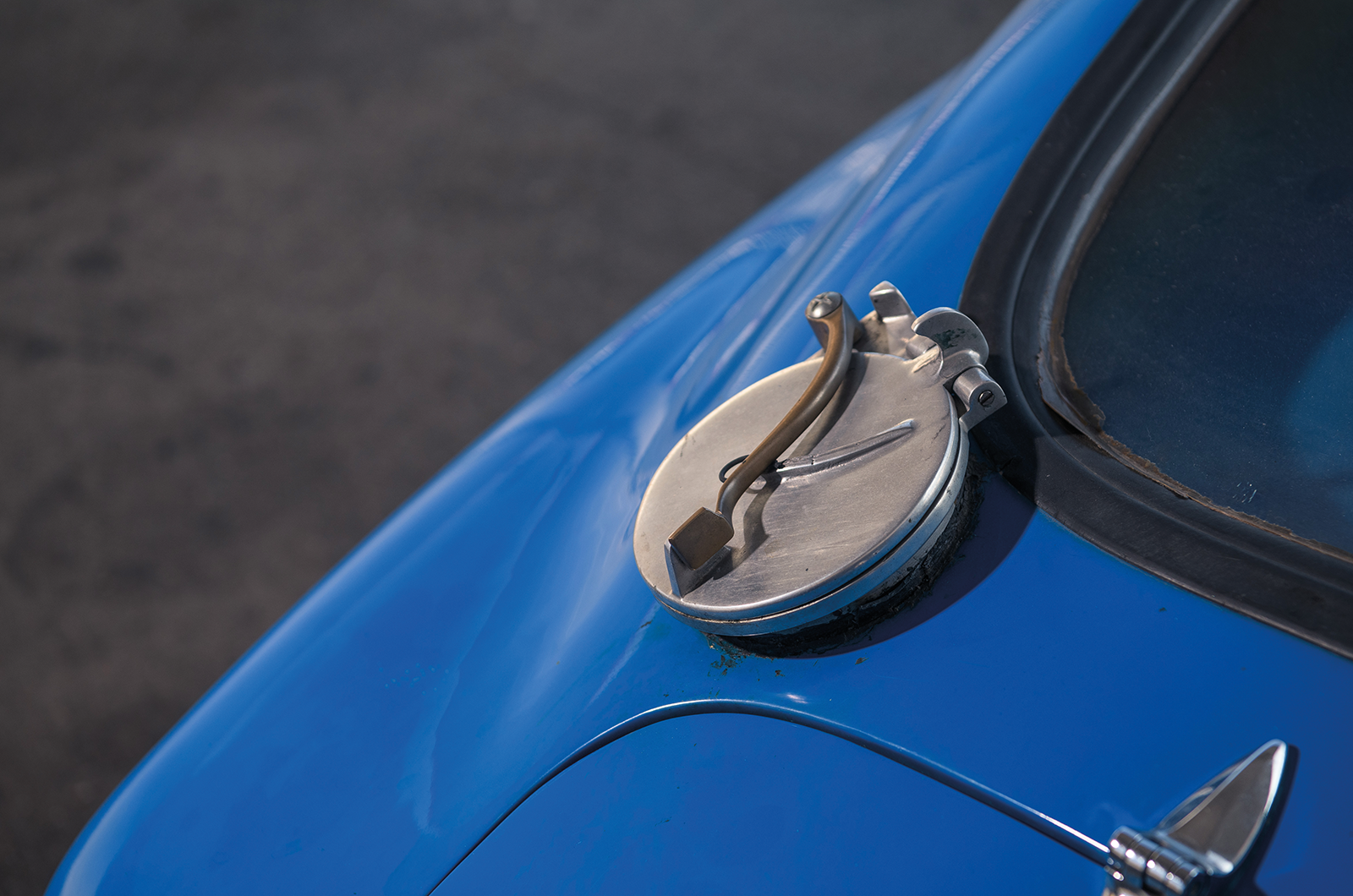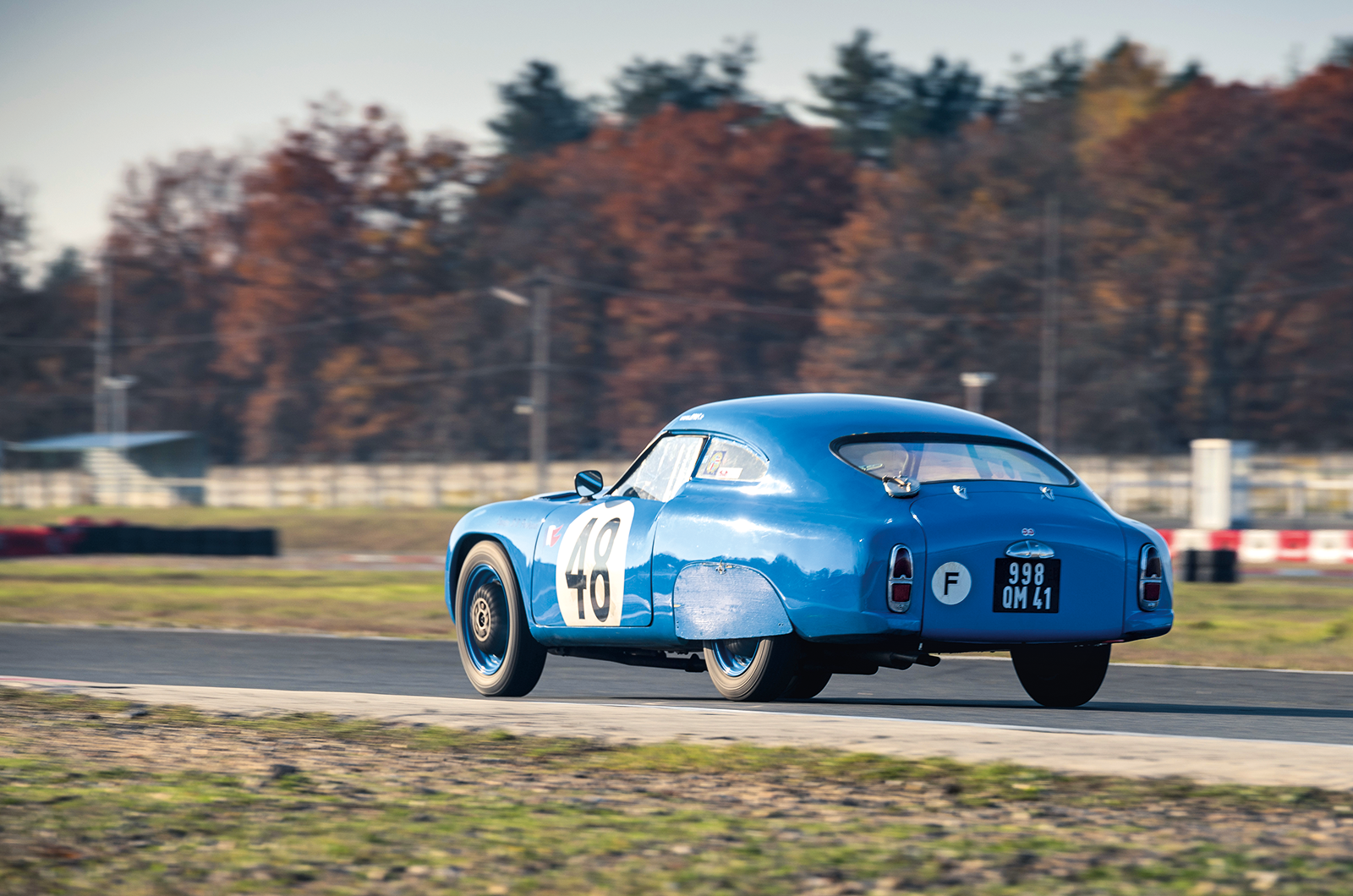To engage first gear, depress the light clutch and steer the short lever towards your right leg. Second is straight across the naked transmission tunnel rather than up, with third up in front of first.
But instead of being mind-scrambling it’s almost intuitive, soon becoming natural to slip between the ratios.
Still, there’s a diagram from the factory on the bare aluminium dash beside the Jaeger dials, should you get in a muddle.
The gearlever – and the handy reminder
The wooden wheel is large and the skinny tyres dutifully do as it directs, the car leaning through bends with the rear gripping gamely.
It’s a consuming and engaging experience, one that would quickly be about rhythm and maintaining momentum.
The long stints at the 24 Hours must have been a riot – though the Mulsanne would have felt longer and louder than ever.
The DB’s current owner, Roland Roy, is more used to his cars gobbling Les Hunaudières with a bit more ease and lots more sonic delight.
He was a key figure in local marque Matra during its rise to racing prominence in the 1960s, working in its competitions department running the team of people creating the fabulous bodywork.
He and ‘Le Monstre’ were seemingly meant to be.
Unique in an already rarefied world of DBs
“It’s a small world,” he says via Antoine Mahe from Artcurial, which will auction Le Monstre at Rétromobile in Paris this week.
“The Matra-Djet Club president received a call from a mechanic in France telling him to come and look at this special DB because he didn’t know what it was. I went, too, and recognised it straight away.
“The last time I had seen it was in 1973 at Le Mans for the 50th anniversary of the 24 Hours; Guilhaudin and Rey were with it.
“I was there working for Matra, the year of the battle with Ferrari. I was in charge of the pit signals, and at the end of the race we prepared a sign with a horse flagging on it, and a cockerel showing the middle finger!”
Front-drive gives good traction
Because of that unfortunate Daytona-inflicted damage, a good deal was struck with the previous owner, who had bought Le Monstre from Rey but left it unused and untouched ever since.
Roy towed the car home on a flatbed trailer behind a modest Fiat Tipo, and a year or so of long nights and no holidays later his work was complete.
His experience from the Matra bodyshop was no doubt invaluable, his drawings detailed like few could manage.
A fellow club member’s car was used to form the moulds to replace the broken front and rear sections, but the rest of Le Monstre was largely in working order and it was soon back racing. Including at Le Mans, in the Journée Bleues event on the Bugatti Circuit.
Race-ready details
Roy discovered that the ever-inventive Guilhaudin had rigged the brake lights to illuminate only when the rear pads closed rather than the fronts, which engaged first – the all-important little gains in the mind games.
The engine bay also houses two electrical regulators, so if one failed the second could be plugged straight in and the car would be back on its way.
It’s a car of curiosities that encapsulates – and still carries – the spirit of France’s greatest race, a preserved window into the world of economy motorsport.
This isn’t about outright pace but ingenuity, about a love and desire to go racing and a will for the little guy to win. Usually a preserve of the British, not the French.
Body modifications are most obvious from the rear – finned alloy drums protrude through the centre of the steel wheels
It is also a player in the final chapter of DB, because Deutsch and Bonnet acrimoniously went their separate ways the same year as Le Monstre’s Le Mans.
CD was born in a similar vein to DB, carrying creator Charles’ initials, while Bonnet teamed with Renault to unleash the Djet and later sold out to Matra, where Roy would soon be learning his craft. Truly, a small world.
Images: Olgun Kordal/Motorsport Images/Archives Maurice Louche
Thanks to Sologne Karting and Artcurial
This was originally in our February 2020 magazine; all information was correct at the date of original publication
READ MORE
Record-setting Le Mans racer’s multi-million sale
Super low-mile Ford RS200 set for Race Retro sale
Motorsport memories: Jackie Stewart at 80
Jack Phillips
Volvo-owning Jack Phillips is a contributor to and former Deputy Editor of Classic & Sports Car
